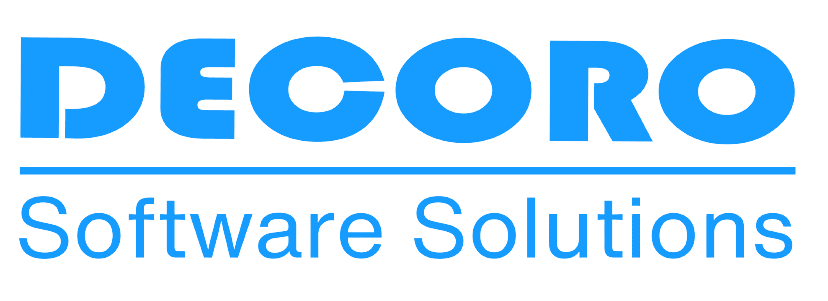In the fast-paced realm of online business, the choices for promoting products and services have expanded exponentially. Digital marketing and affiliate marketing stand out as two prominent strategies, each with its unique strengths and advantages. In this comprehensive blog post, we’ll delve into the intricacies of both digital marketing and affiliate marketing, exploring their core concepts, methodologies, and potential benefits. By the end, you’ll have a clearer understanding of which strategy aligns best with your business objectives.
Understanding Digital Marketing:
Definition of Digital Marketing:
Digital marketing encompasses a broad spectrum of online promotional activities aimed at reaching and engaging a target audience through various digital channels. These channels include search engines, social media platforms, email, and websites.
Components of Digital Marketing:
Search Engine Optimization (SEO):
Search Engine Optimization (SEO) is a crucial aspect of digital marketing that aims to improve a website’s visibility on search engines like Google. The goal is to enhance the quality and quantity of website traffic by optimizing various elements, both on-page and off-page, to align with search engine algorithms. Here’s a comprehensive overview of SEO:
Understanding SEO:
1. On-Page SEO:
- Keyword Research: Identify relevant keywords that your target audience uses in search queries.
- Content Optimization: Create high-quality, valuable content incorporating selected keywords naturally.
- Meta Tags: Optimize title tags, meta descriptions, and header tags for search engines and users.
- URL Structure: Ensure clean and readable URLs that include relevant keywords.
2. Off-Page SEO:
- Backlink Building: Acquire high-quality backlinks from reputable websites to boost your site’s authority.
- Social Signals: Engage on social media platforms to increase brand visibility and encourage social sharing.
- Online Reputation Management: Monitor and manage online reviews and mentions to build a positive brand image.
3. Technical SEO:
- Site Speed Optimization: Improve loading times for better user experience and search engine ranking.
- Mobile Optimization: Ensure your website is responsive and user-friendly on mobile devices.
- Crawlability and Indexing: Make sure search engine bots can easily crawl and index your site’s pages.
Social Media Marketing (SMM):
In the dynamic realm of digital marketing, Social Media Marketing (SMM) stands as a powerful force that can elevate brands, engage audiences, and drive business growth.
Understanding Social Media Marketing
1. Defining SMM:
- Social Media Marketing involves leveraging social media platforms to connect with your audience, build brand awareness, and achieve marketing goals.
2. Key Platforms:
- Explore popular platforms such as Facebook, Instagram, Twitter, LinkedIn, Pinterest, and TikTok, each offering unique opportunities for audience engagement.
3. Goals and Metrics:
- Establish clear goals for your SMM efforts, whether it’s brand awareness, lead generation, or community building.
- Measure success through metrics like engagement rates, click-through rates, and conversions.
Email Marketing:
In the vast landscape of digital marketing, email remains a stalwart channel for direct communication with your audience.
Understanding Email Marketing
1. Defining Email Marketing:
- Email marketing involves sending targeted messages to a group of recipients with the goal of nurturing leads, driving sales, and building brand loyalty.
2. Key Components:
- Explore the essential elements of an email campaign, including subject lines, content, calls-to-action (CTAs), and personalized segmentation.
3. Goals and Metrics:
- Establish clear objectives for your email campaigns, such as lead generation, customer retention, or product promotion.
- Track metrics like open rates, click-through rates (CTRs), conversion rates, and unsubscribe rates.
Crafting Compelling Email Campaigns
1. Audience Segmentation:
- Divide your audience into segments based on demographics, behavior, or preferences.
- Tailor content for each segment to increase relevance and engagement.
2. Personalization:
- Implement personalization strategies, addressing recipients by name and delivering content based on their preferences.
- Use dynamic content to customize emails dynamically.
3. Effective Copywriting:
- Craft clear, concise, and compelling copy.
- Use persuasive language and compelling storytelling to engage readers.
4. Visual Appeal:
- Design visually appealing emails with a mobile-responsive layout.
- Incorporate high-quality images, infographics, and videos.
5. CTAs and Landing Pages:
- Create compelling and action-oriented CTAs.
- Ensure landing pages align with the email content and guide users toward conversions.
Content Marketing:
In the ever-expanding digital landscape, Content Marketing stands as a linchpin for building brand identity, engaging audiences, and driving business growth. This guide delves into the strategies, best practices, and emerging trends that define successful content marketing campaigns.
Understanding Content Marketing
1. Defining Content Marketing:
- Content marketing involves creating and distributing valuable, relevant, and consistent content to attract and retain a clearly defined audience.
2. Key Components:
- Explore the fundamental elements of content marketing, including blog posts, articles, videos, infographics, and social media content.
3. Goals and Metrics:
- Establish clear objectives for your content marketing efforts, such as brand awareness, lead generation, or customer retention.
- Track metrics like engagement, conversions, and audience growth.
Crafting Compelling Content
1. Audience Persona Development:
- Create detailed buyer personas to understand your target audience’s demographics, preferences, and pain points.
- Tailor content to resonate with each persona.
2. Storytelling Techniques:
- Utilize storytelling to captivate your audience emotionally.
- Craft narratives that connect with your brand values and resonate with your audience.
3. SEO-Friendly Content:
- Incorporate relevant keywords naturally to enhance search engine visibility.
- Focus on creating valuable content that addresses user intent.
4. Visual Content:
- Leverage the power of visuals, including images, infographics, and videos.
- Ensure visual consistency with your brand’s identity.
5. Content Calendar:
- Plan a content calendar to ensure a consistent publishing schedule.
- Align content with seasonal trends, industry events, and your marketing strategy.
Advantages of Digital Marketing:
Global Reach:
Digital marketing allows businesses to reach a global audience, breaking geographical barriers.
Measurable Results:
Analytics tools enable businesses to track and measure the performance of their campaigns in real-time.
Targeted Advertising:
Precision in targeting specific demographics ensures that marketing efforts are focused on the most relevant audience.
Navigating the Landscape of Affiliate Marketing:
Definition and Operational Model:
Definition of Affiliate Marketing:
Affiliate marketing is a performance-based marketing strategy where businesses reward affiliates (partners) for driving traffic or sales to the business through the affiliate’s marketing efforts.
Operational Model:
- Affiliates earn a commission for each sale, click, or lead generated through their unique affiliate links.
- Various types of affiliate marketing models, such as pay-per-sale, pay-per-click, and pay-per-lead.
Advantages of Affiliate Marketing:
Cost-Effective:
Businesses only pay for actual results, making affiliate marketing a cost-effective strategy.
Scalability:
The affiliate network allows for rapid scalability as more affiliates can join and promote products or services.
Risk Mitigation:
Risks are mitigated as businesses only pay for successful transactions, reducing the financial burden on unsuccessful marketing endeavors.
Comparative Analysis: Digital Marketing vs. Affiliate Marketing
Cost Considerations:
Digital Marketing Costs:
Investments in paid advertising, content creation, and marketing tools can accumulate substantial costs.
Affiliate Marketing Costs:
While there may be initial setup costs, affiliate marketing is generally more cost-effective as businesses pay for actual results.
Targeting and Audience Engagement:
Digital Marketing Targeting:
Advanced targeting options are available, but reaching a highly specific audience may require substantial budget allocations.
Affiliate Marketing Targeting:
Affiliates often have niche-specific audiences, allowing for highly targeted promotion at a lower cost.
Risk and Performance Measurement:
Digital Marketing Risks:
Investments in digital marketing may not always guarantee returns, and measuring performance can be complex.
Affiliate Marketing Risks:
Risks are minimized as businesses only pay for actual sales or leads, and performance metrics are relatively straightforward.
Integration Strategies: Maximizing Synergies
Strategic Integration of Digital and Affiliate Marketing:
Leveraging digital marketing for brand awareness and affiliate marketing for conversion-focused campaigns.
Utilizing affiliate marketing to amplify the reach of digital marketing efforts.
Conclusion:
In conclusion, the choice between digital marketing and affiliate marketing depends on various factors, including budget, target audience, and business objectives. While digital marketing offers a comprehensive approach to online promotion, affiliate marketing provides a performance-based model that can be highly cost-effective. Ultimately, a well-thought-out integration of both strategies may offer a synergistic solution, combining the strengths of digital marketing’s reach with the efficiency and cost-effectiveness of affiliate marketing. It’s crucial for businesses to assess their unique needs and goals to determine which approach, or combination thereof, will propel them towards online success.

